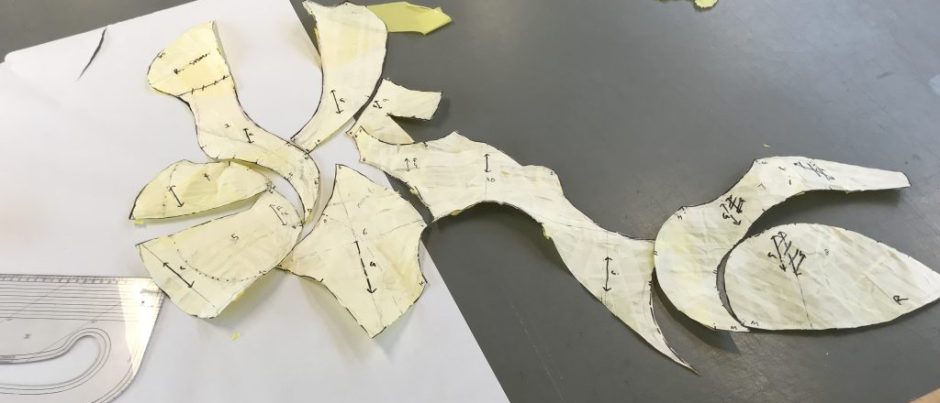Alvesson, M (2011) Views on Interviews: A Skeptical Review. In: Interpreting Interviews. London: SAGE Publications Ltd. pp. 9-42 Available at: (Accessed 6 Oct 2024).
Ball, L. Christensen, B. and Halskov, K. (2021) ‘Sticky notes as a kind of design material: How sticky notes support design cognition and design collaboration’ in Design Studies, 76, pp. 1 – 31 Available at: https://www.sciencedirect.com/science/article/pii/S0142694X21000454 (Accessed 20 November 2024)
Banks, J (2009) ‘Gender Below-the-line: Defining feminist production studies’ in Banks M.J., Caldwell J.T. and Mayer V. (eds.) Production Studies: Cultural studies of media industries. New York: Routledge. pp. 87-98.
Beer, T (2021) Ecoscenography : An Introduction to Ecological Design for Performance, Palgrave Macmillan, Singapore. Available from: ProQuest Ebook Central (Accessed on: 24 October 2024)
Cleary, V (2024) Thinking through making: What kinds of learning take place when HE students engage with creative arts technicians?’ in Art, Design and Communication in Higher Education. Available at: https://doi.org/10.1386/adch_00087_1 (Accessed on: 22 October 2024)
Curtis, B. and Curtis, C. (2011) In-Depth Interviewing – the Interactive Base. In: Social Research: A Practical Introduction. 55 City Road, London: SAGE Publications, Inc. pp. 27-54 Available at: https://doi.org/10.4135/9781526435415 (Accessed: 06 December 2024)
Garrett, I (2021) ‘The Ethical Turn in Sustainable Technical Theatre Production Pedagogy’ in Theatre Topics 31 (2), pp. 179-186
Gray, C, & Malins, J (2007) ‘Interpreting the map: methods of evaluation and analysis’ in Visualizing Research : A Guide to the Research Process in Art and Design. Taylor & Francis Group, Abingdon, Oxon. pp.1349 – 158. Available from: ProQuest Ebook Central. (Accessed: 05 December 2024)
Helm, M (2024) Fashion for the Earth: Beneath the Seams: The Human Toll of Fast Fashion. Available at: https://www.earthday.org/beneath-the-seams-the-human-toll-of-fast-fashion (Accessed 20 October 2024)
Irvine, A., Drew, P., and Sainsbury, R. (2013) ‘Am I not answering your questions properly?’ Clarification, adequacy and responsiveness in semi-structured telephone and face-to-face interviews in Qualitative Research, 13(1), pp. 87 – 106
Jean, M (2021) ‘The Tools at Hand’ in Survey Questions, SAGE Publications, pp. 48 – 75
Kara, H (2015) ‘Analysing Data’ in Creative Research Methods in the Social Sciences : A Practical Guide‘, Policy Press, Bristol. pp.99 – 119. Available from: ProQuest Ebook Central. (Accessed: 18 September 2024)
Katy Downton (2024) ‘Putting the Theatre Green Book into practice: sustainability, pedagogy and the Conservatoire’ in Theatre, Dance and Performance Training, 15 (3), pp. 429-444
Pantouvaki, S., Fossheim, I. and Suurla, S. (2021) Thinking with costume and material: A critical approach to (new) costume ecologies, in Theatre and performance design, 7 (3-4), pp.199-219. Available at: https://www.tandfonline.com/doi/pdf/10.1080/23322551.2021.2002056 (Accessed: 20 September 2024)
Renew Culture (2021) Theatre Green Book. Available at: https://theatregreenbook.com/wp-content/uploads/2024/03/TGB_v2.pdf (Accessed: 30 October 2024)
Shreya Rathi and Dr. Vishva Chaudhary (2024) “UNDERSTANDING THE PSYCHOLOGY OF PROCRASTINATION: CAUSES AND SOLUTIONS”, in International Journal of Linguistics Applied Psychology and Technology (IJLAPT) , 1(2(June), pp. 1–24. Available at: http://ijlapt.strjournals.com/index.php/ijlapt/article/view/45 (Accessed: 8 October 2024).
Taherdoost, H. (2022) ‘How to Conduct an Effective Interview; A Guide to Interview Design in Research Study’ in International Journal of Academic Research in Management, 11(1), pp. 39-51. Available at: https://elvedit.com/journals/IJARM/wp-content/uploads/How-to-Conduct-an-Effective-Interview-A-Guide-to-Interview-Design, (Accessed 4 November 2024)
Unspecified (2024) ‘Research participant information and consent’ [City University of London] Available at: https://www.city.ac.uk/research/support/integrity-and-ethics/guidance-and-resources/participants#:~:text=The%20consent%20form%20should%20include%20the%20following%20statements%3A&text=I%20understand%20that%20my%20participation,take%20part%20in%20this%20study (Accessed 24 October 2024)
Vaughn, S. Schumm, J, S. Sinagub, J. (2013) Focus Group Interviews in Education Phycology in Sage Research Methods. Thousand Oaks, Sage Publications, Inc
Zezulka, K. (2024) ‘Sustainability in technical theatre pedagogy and practice’, in Theatre, Dance and Performance Training, 15(3), pp. 415–428

